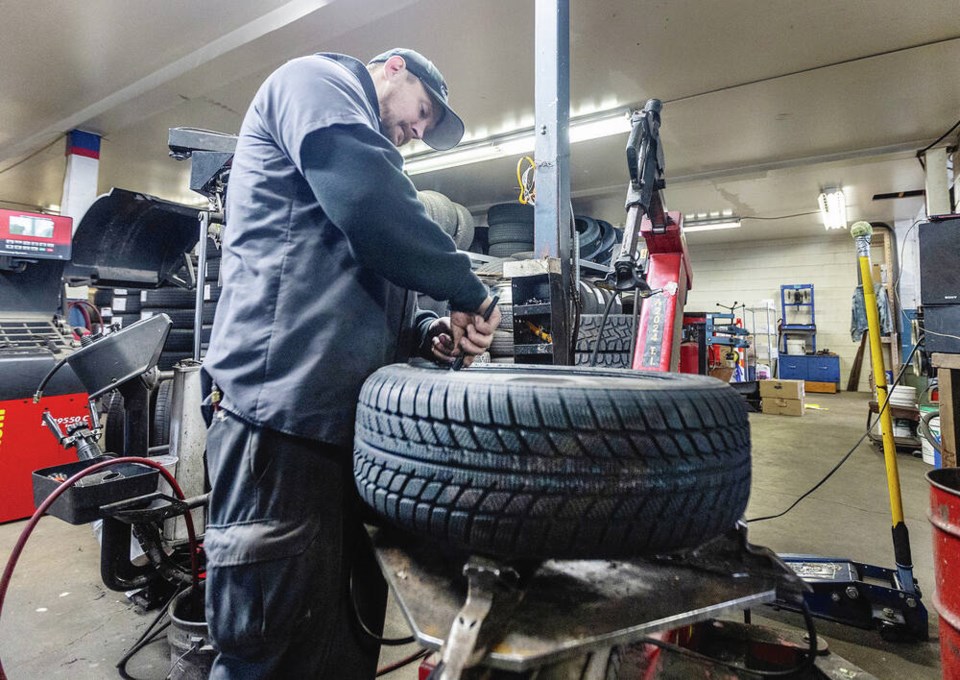We had ample warning that last week’s cold snap was about to descend. Provincial and local authorities offered assurance that crews and equipment would be ready to handle Old Man Winter — not like last year when thousands of drivers were caught in “Snowmageddon” 2023.
Things were better this time out, but there were still scores of commuters caught out by our latest deep freeze. It’s harder to blame the system for all of the problems this time out. The bottom line is: Summer and all-season tires can’t cut it — even in these “kind of/sort of” wind chill conditions we experience here on the Island. I say “sort of” based on looking at conditions in Fort Nelson: -33C, or Calgary -26C.
Winter tires perform better in the winter — full stop. Winter tires have large, chunky tread patterns, designed to channel slush and snow away from their contact points on the road. Winter tires are also made with softer rubber compounds, which include silica. Many also feature “sipes,” small cuts in the tread, so they move the water away with a squeegee-like effect. Overall, this means that a tire is providing more surface contact with the road, giving greater control.
But winter tires aren’t infallible. They are not a licence to drive the same way you would in the summer, especially on ice. Winter tires offer slight traction advantages on ice at slow speed but when we’re talking about a skating rink level of iciness, no tire is completely safe.
Studded tires can certainly help in these worst-case scenarios, but conditions around here rarely warrant them being on your vehicle full time. Many jurisdictions actually prohibit the use of studded tires for most of the year.
One important part of installing snow tires is often overlooked. It’s not just about snow; it’s also about temperature. Winter tires are a good idea when the temperature gets below 7C.
As it gets colder outside, the rubber in summer or all season tires hardens up, becoming more inflexible. Inflexibility kills traction — the thing you want most in poor road conditions.
One of the many factors dissuading drivers from switching tires is, of course, cost. Today, you could easily spend $2,000 on good winter tires. Most experts, though, argue that avoiding the risk and hassle of a collision is worth it. Insurance deductibles can often run from $500 to $1,000 depending on coverage. You could also face fines and other penalty assessments which, when added up, make the cost of snow tires seem pretty reasonable.
So why are all-season tires not good for all seasons? A better way to define them would be: most-season tires. Again, it’s about the drop in temperature in this country, basically from October to April.
All seasons will mostly work for rain, small amounts of mud and slush and very light snow. If you think differently, check out some of the weather news stories from around the province last week.
Many regional road clearing managers were quick to point out that while their crews were much better prepared than last year, drivers were not. Vehicles careering down icy hills, cars abandoned overnight by their drivers and 8- to 10-hour commutes to get home told the story. There weren’t many snow tires to be seen.
All-weather tires are an option when budgets are tight. They have the advantage of being softer than summer tires but not to quite the same degree as the full-on winter tire. This means they can be driven all year round. They bear the M+S and mountain snowflake designation and are designed for mild winters.
While they maintain a softer density below 7C, they are not pure winter tires designed to withstand the worst a Canadian climate can throw at them.
Testing studies around winter tires have shown that overall they can stop your vehicle with 30% to 40% less distance than with all seasons.
As one pundit put it: “All seasons are a bad compromise for winter driving.”
However, soft, flexible snow tires are a bad idea in the summer. You need to change them. They offer less grip and stability on hard, dry roads and are not recommended, especially with the scorchers we’ve seen over the past few years.
Glove Box: Black ice is a reality even on the Island. If you start to slip, slow and deliberate counter-manoeuvres are the best. Maintain a light but firm grip on the wheel and look where you want to go. Get off the gas immediately and allow the tires to regain their traction. Slow and gentle corrections are the key. Harsh braking and swerving manoeuvres are more apt to put you upside down or into a ditch — or both.



